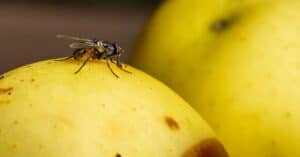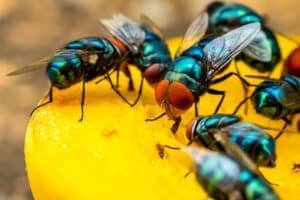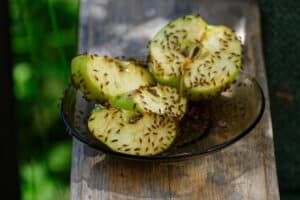Flies are all around us and they are one of only a few animals that occur on every continent in the world — including Antarctica. It is estimated that there are more than 120,000 known species, with many more that are yet to be classified. Although some flies are important pollinators, many are considered to be pests as they are common disease carriers. Another reason that flies are considered to be a nuisance is their ability to reproduce quickly. But, how do flies reproduce? Let’s find out!
About Flies
There are many animals that share the common name of “fly”, including dragonflies, damselflies, and whiteflies. However, only those in the Diptera order are classified as “true flies” and they are distinguished by having only one set of wings. They also have a set of halteres which are used to balance and guide them while in flight. The size and shape of the true flies can differ widely depending on the species. Gauromydas heros is the largest fly in the world and can reach 2.8 inches long with a wingspan of 3.9 inches, while Euryplatea nanaknihali is the smallest at only 0.016 inches long.
Flies are capable of living in virtually any habitat, although they are most common in damp or humid places. Although some flies do carry diseases, others are welcomed by gardeners as they are excellent pollinators of plants. Many species also prey on other garden pests such as aphids.
The Reproductive Process of Flies
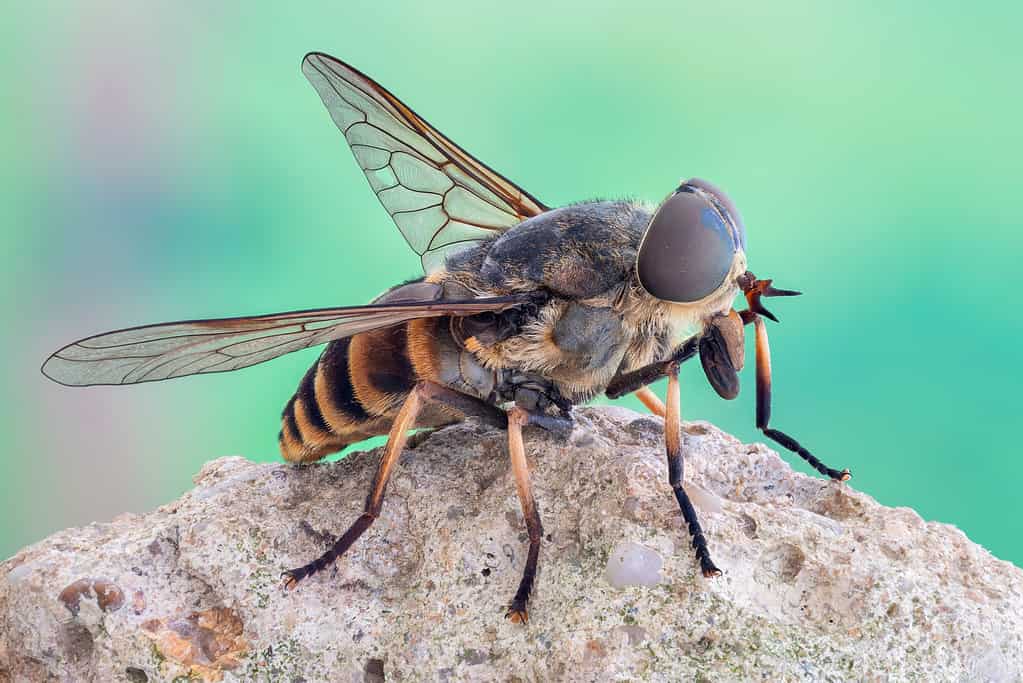
Flies undergo a complete metamorphosis during their transition from eggs to adults.
©iStock.com/guraydere
There are four stages to the lifecycle of a fly — egg, larvae, pupae, and adult — during which time they undergo a complete metamorphosis. Flies are known for their rapid reproductive process and the entire transformation typically takes as little as seven to 10 days to complete. Flies typically begin to reproduce in May and this continues until October, although in warmer areas they can remain active all year round. Warm, summer weather provides the optimal conditions for flies to reproduce to maximum effect, while cold weather can reduce or slow it down.
Mating
For flies, the reproductive process begins with attracting a mate. Flies are sexually mature less than 24 hours after they become adults. Female flies attract males using pheromones — particularly muscalure. Courting consists of the male “striking” the female in mid-air by flying into her. Once a male has been attracted the pair mate, with this stage lasting anywhere from 30 minutes to two hours. Most species of flies are polygynous, meaning that the female mates with only one male, but the male may mate with several females during his life.
Eggs
Following mating, the female begins the most important stage — laying her fertilized eggs. The location can very depending on the species, but most flies lay their eggs in warm, moist areas. This can include places such as garbage, animal faeces, rotten food, and carrion. Flies lay their eggs in batches and each batch can consist of between 75 and 200 eggs. Several batches are laid over a period of three to four days and it’s not unusual for one fly to lay as many as 500 eggs in total. The eggs are small and white, resembling tiny grains of rice which are barely visible to the human eye.
Fly eggs hatch after approximately 24 hours after they have been laid. However, they can sometimes hatch after as little as eight hours, depending on the weather conditions. In general, warmer weather results in eggs hatching quicker, while cooler weather can delay the process by up to two days.
Larvae
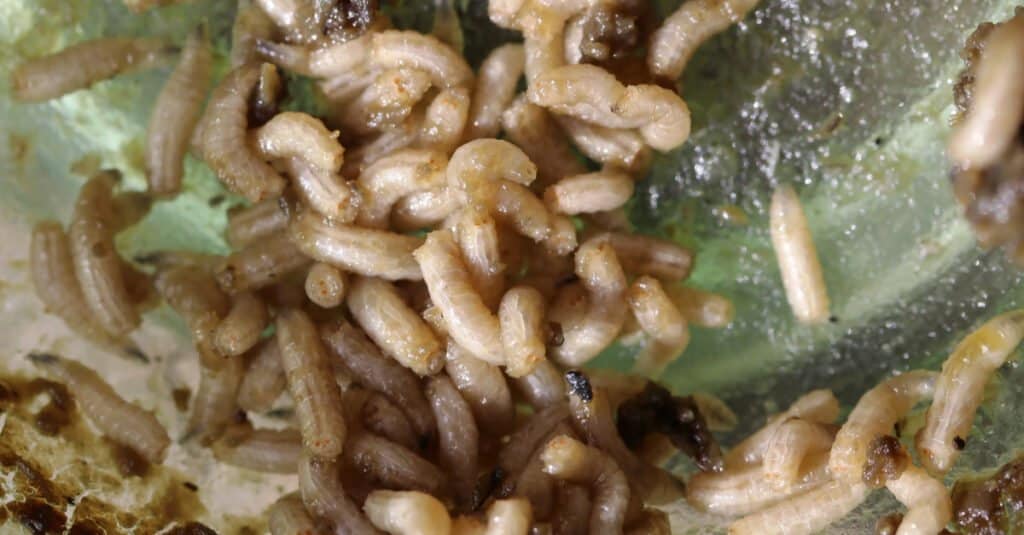
Maggots undergo three molts before the pupal stage is reached.
©Astrid Gast/Shutterstock.com
The next stage of the process is the larval stage. At this point the eggs hatch and the larvae appear as white, thin-bodied animals which are also known as maggots. Maggots feed on the same decaying material that the eggs were laid on. This allows them to grow sufficiently to undergo the molting process.
Maggots go through three molts which are also called instars. This stage typically takes between eight and 10 days to complete. During this time, the maggots continue to eat and grow rapidly before shedding their skin or exoskeleton.
Pupae
After the third molt the pupa stage is entered. In a complete contrast to the larval stage, during this stage the pupae are dormant. This means that they do not move or feed. Instead, they remain in a cocoon-like shell which is a hard, brown case called a puparium. This period lasts for approximately three to four days while their wings, legs, and antennas develop. However, it can take weeks, or even months, to complete in colder weather. In fact, flies will overwinter in the larval or pupal stage if they need to until they can emerge in the warm spring weather.
Adult
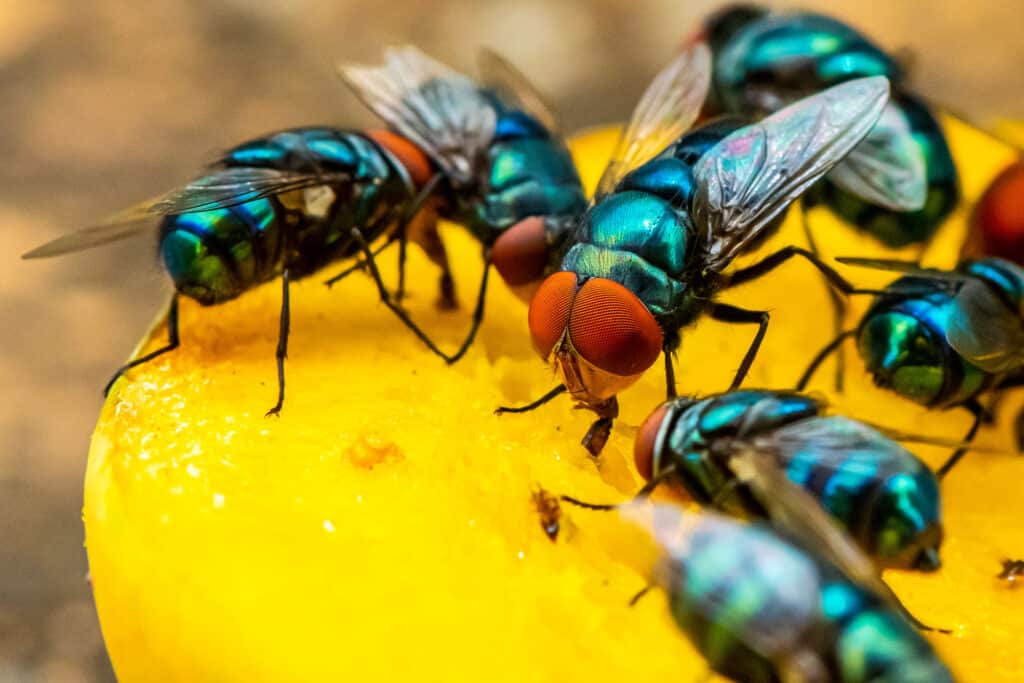
Flies are able to begin reproducing with 48 hours of emerging as adults.
©iStock.com/Phichaklim1
Finally, we reach the adult stage. Once the fly has finished developing it will break out of the puparium and emerge as a fully-grown adult. Females begin producing eggs within the first 48 hours of their adult life, while males are sexually mature around 16 hours after they emerge from the pupa stage. Although it can vary between species, most flies have a relatively short lifespan, averaging just 30 days.
The photo featured at the top of this post is © szumimydlo/Shutterstock.com
Thank you for reading! Have some feedback for us? Contact the AZ Animals editorial team.



